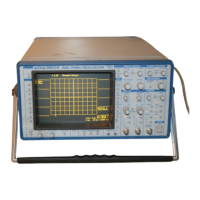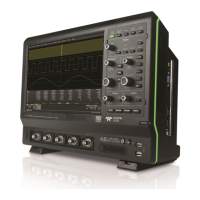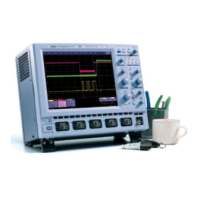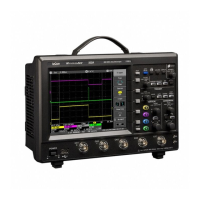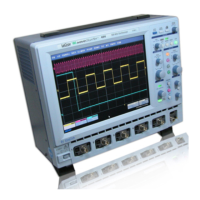System Commands
WAVEFORM TRANSFER
DESCRIPTION
QUERY SYNTAX
Response format
2~ 4-channel oscilloscopes only
I00
INSPECT?, INSP?
Query
The INSPECT? query allows the user to read parts of an acquired
waveform in intelligible form. The command is based on the expla-
nation of the format of a waveform given by the template (use the
query TEMPLATE? to obtain an up-to-date copy). Each logical
block of a waveform may be inspected by giving its name (e.g.
TRIGTIME as mentioned in the template) enclosed in quotes as
the first (string) parameter.
The special logical block named WAVEDESC may also be in-
spected in more detail. By giving the name of a variable in the
block WAVEDESC enclosed in quotes as the first (string) parame-
ter, it is possible to inspect only the actual value of that variable.
Notation
BYTE:
WORD:
FLOAT:
raw data as integers (truncated to 8 m.s.b.*
raw data as integers (truncated to 16 m.s.b.*
normalized data (gain, offset applied) as floating
point numbers (gives measured values in volts or
appropriate units)
* most significant bits
<trace>:INSPect? ’<string>’ [,<data_type>]
<trace> := {EA, EB, MC, MD, FE, FF, C1, C2, C3:~, C4:1:}
<string> := a valid name of a logical block or a valid name
of a variable contained in block WAVEDESC
(see the command TEMPLATE and Section 6).
<data_type> := {BYTE, WORD, FLOAT}
Note: The optional parameter <data_type> applies only for in-
specting the data arrays. It selects the representation of the data.
The default <data type> is FLOAT;
<trace>:INSPect "<string>"
<string> := a string giving name(s) and value(s) of a logical block
or a variable.
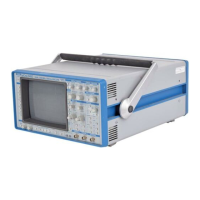
